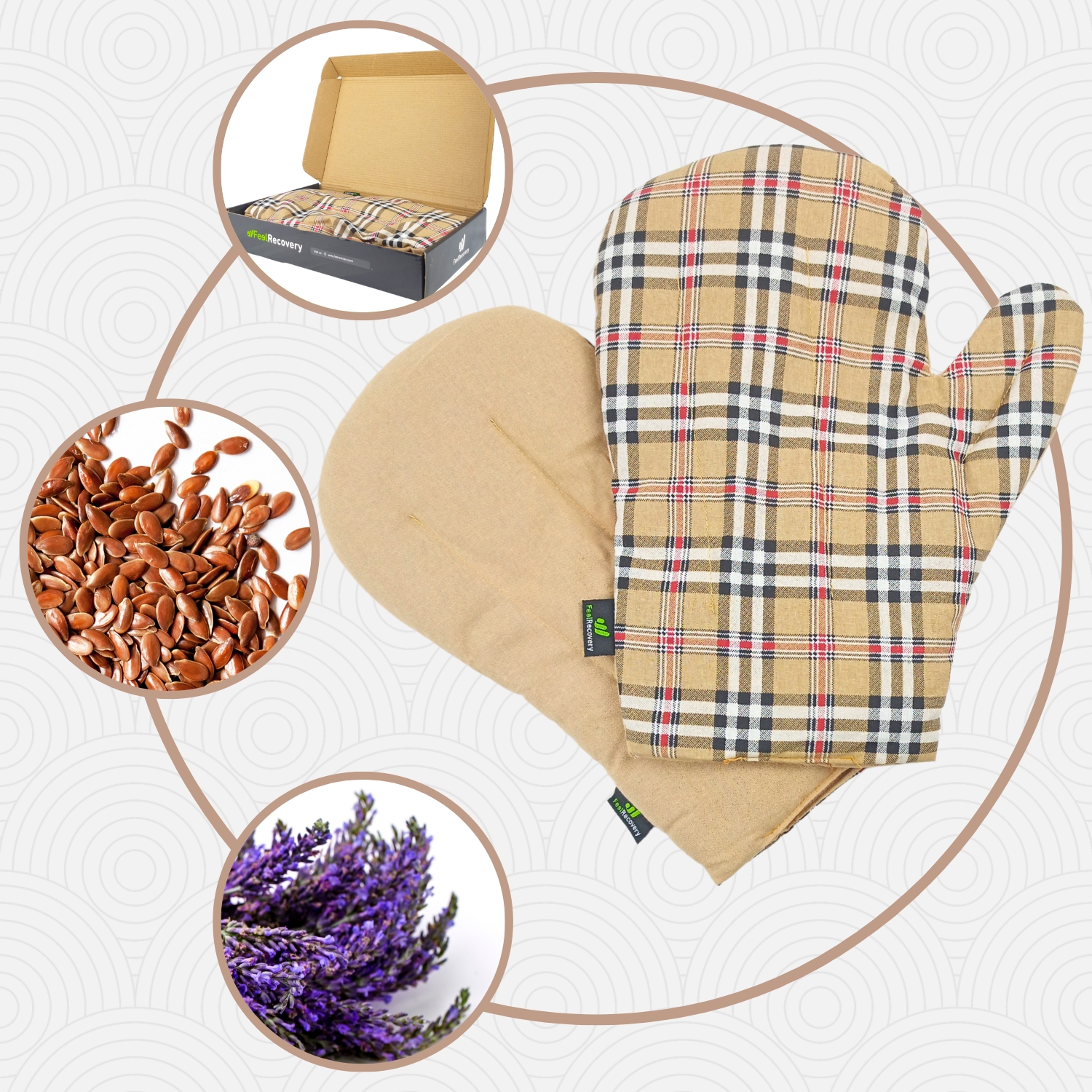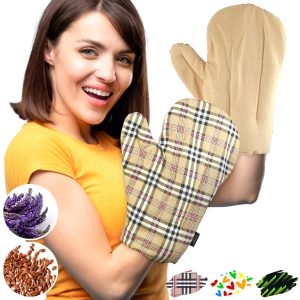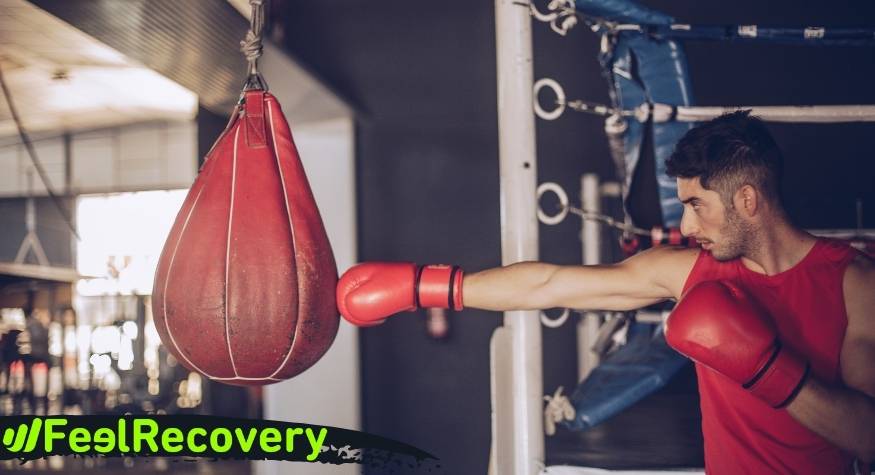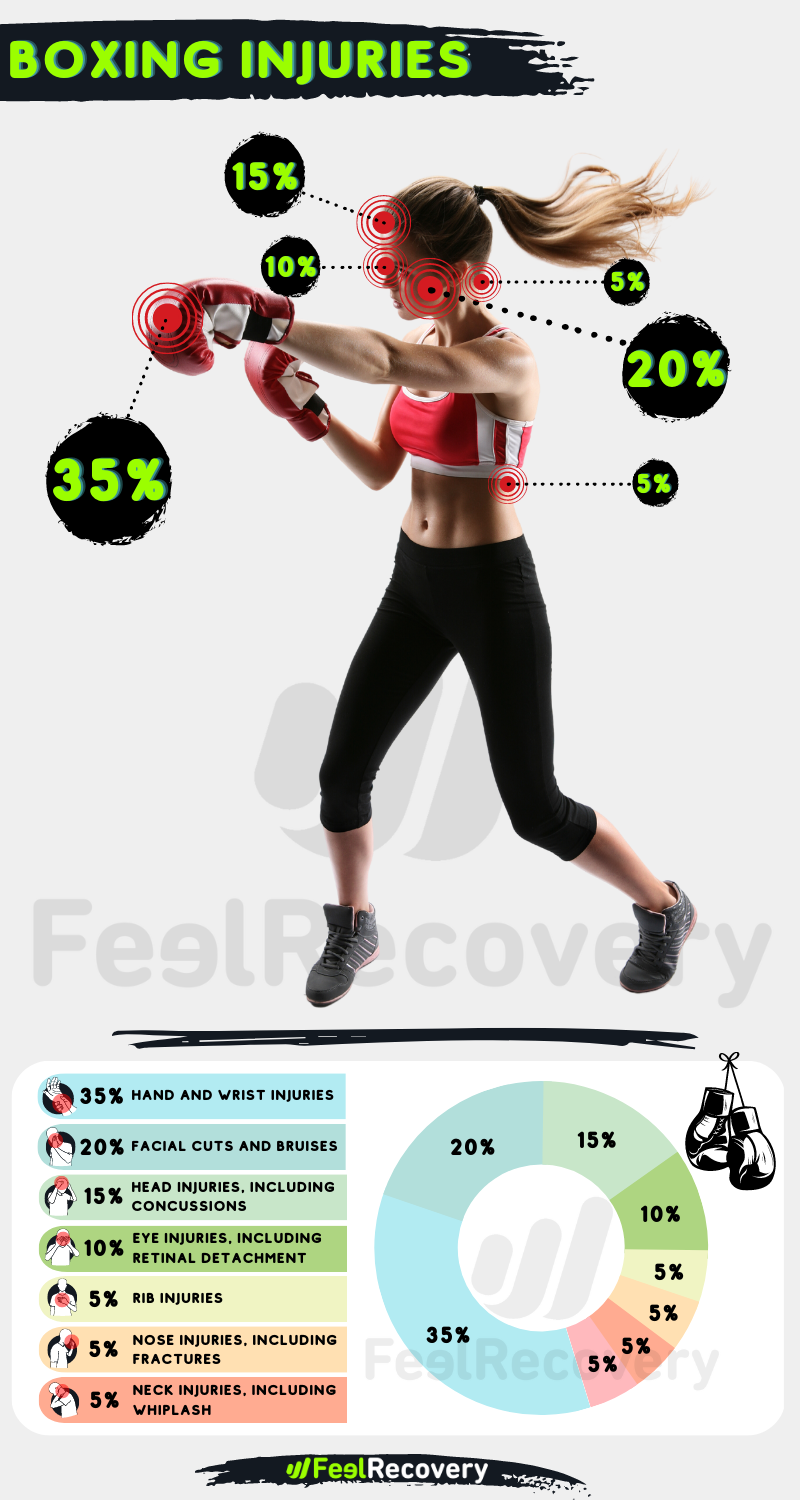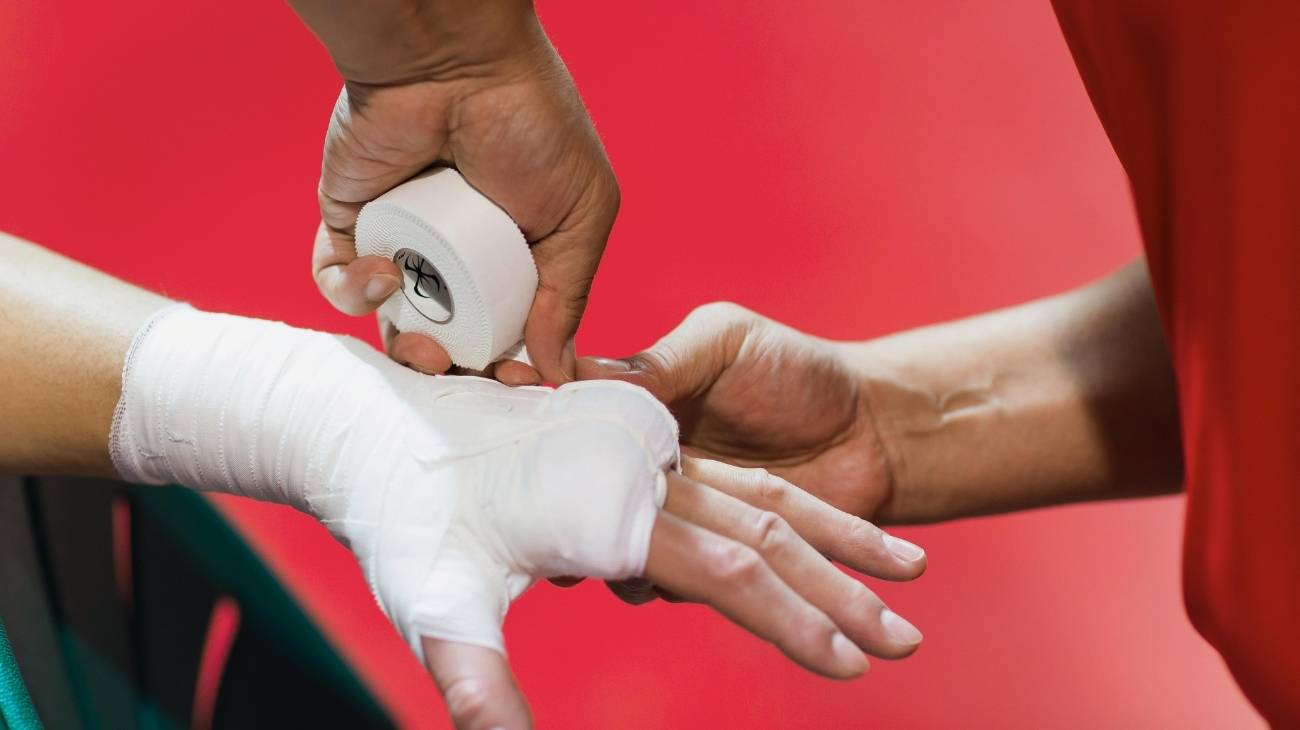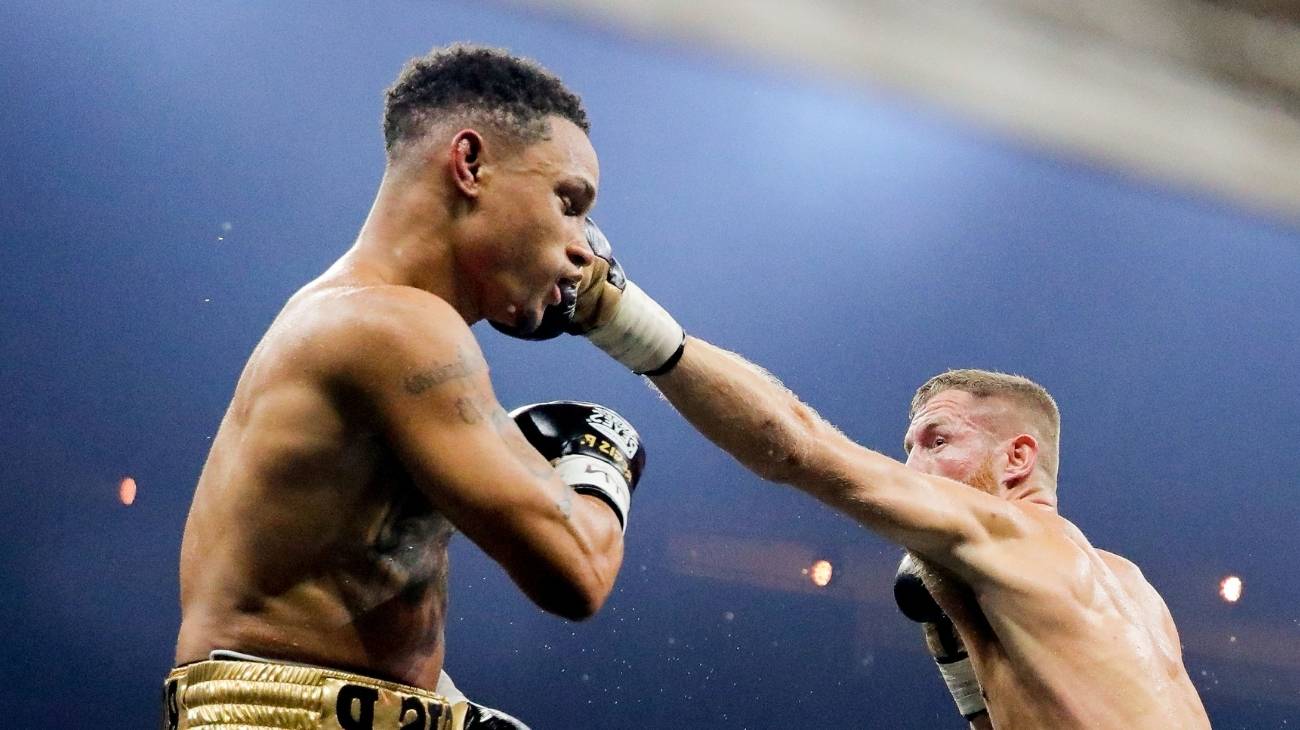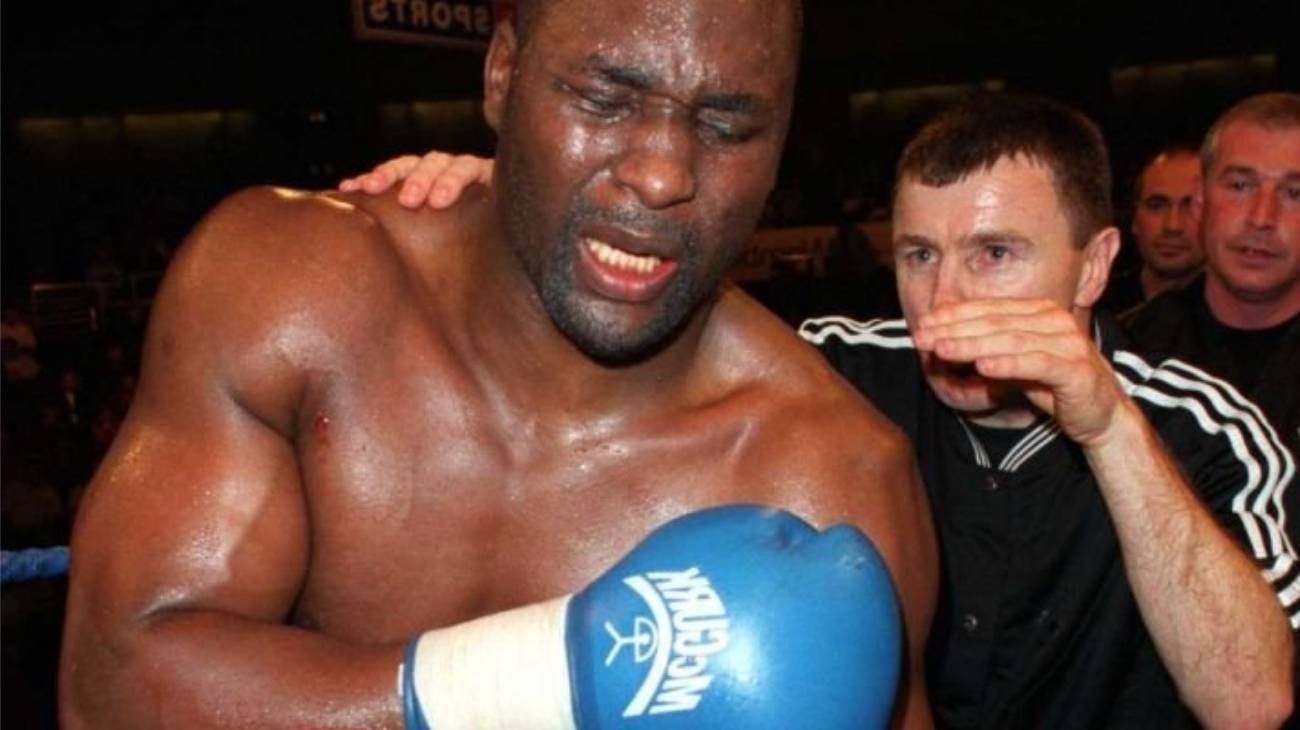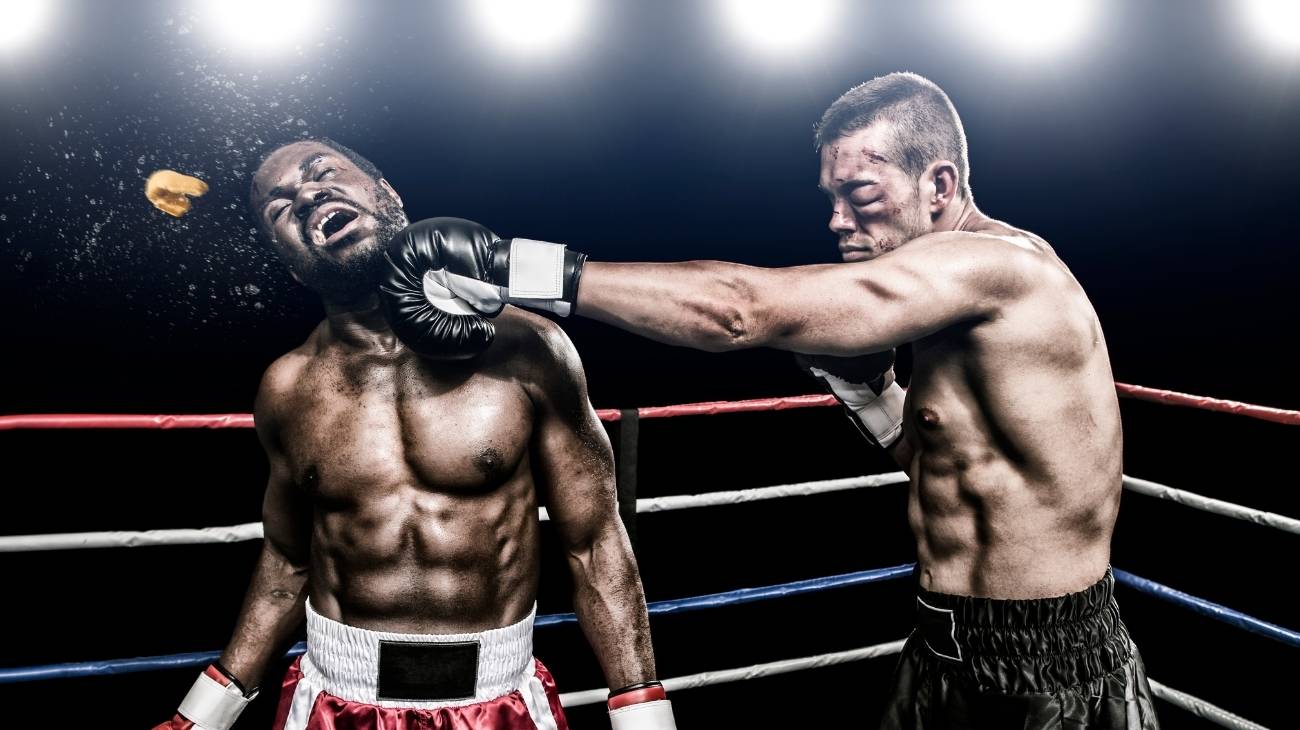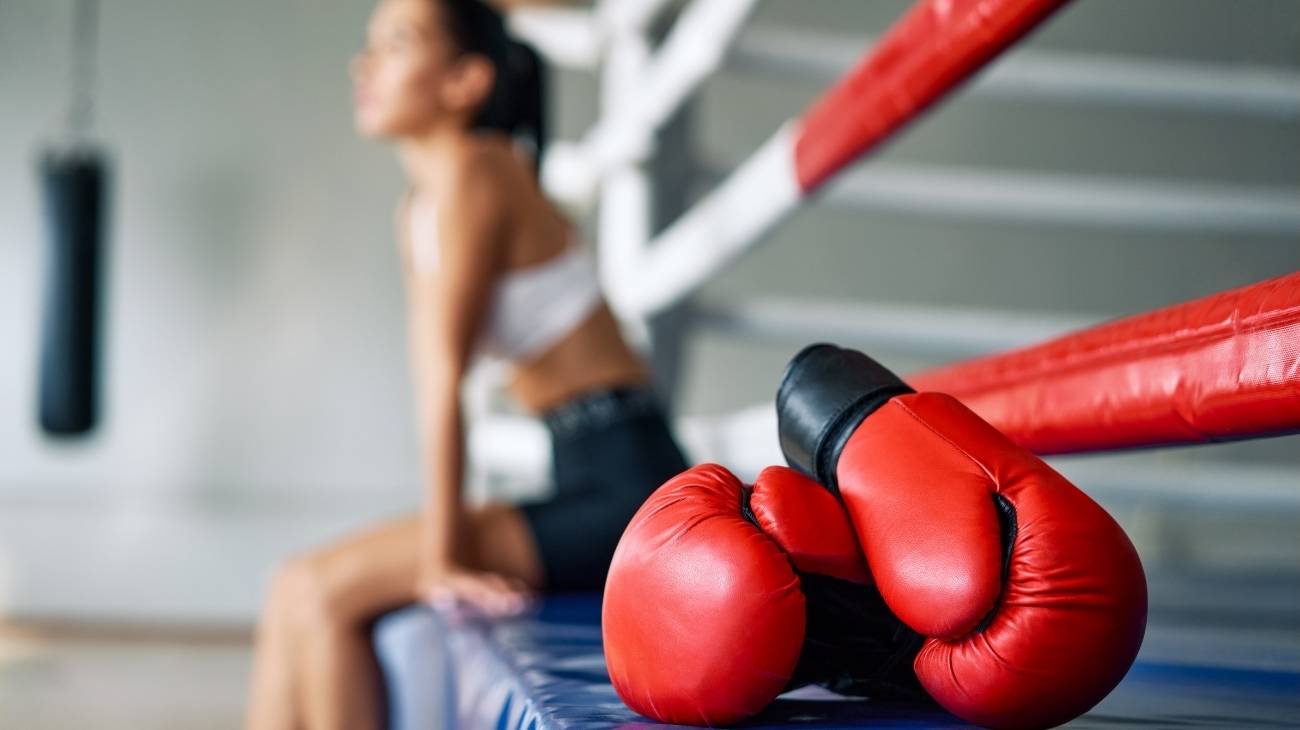- What are the most common types of injuries in boxing and contact sports?
- Best products for boxing injury recovery
- How to prevent injuries when practising boxing or other fighting sports?
- How to apply the RICE therapy to treat first aid injuries in boxing?
- When should we go to a specialist for the treatment of injuries in boxing, Karate or wrestling?
It is the sport of all time, the history of boxing dates back to 5,000 years ago, as recorded in cave drawings in Algeria. The risk is at its highest as two men or women in elite form come to blows in the ring, so it is not uncommon for injuries to occur.
Below we will show you the most common boxing injuries, as well as teach you how to prevent these types of injuries and how to apply the PRICE therapy as a form of first aid to minimise the impact of each one as much as possible.
What are the most common types of injuries in boxing and contact sports?
The first thing you should know is that facial injuries account for 51% of boxing injuries resulting from blows received. Hand and wrist injuries due to poor technique by the attacker are also common. In boxing, injuries of all kinds are very common as the sport is essentially based on causing blunt damage to the opponent, so there are many ailments that boxers will suffer.
Lacerations
Cuts in the ring are a common occurrence. Many of them are not the result of a single blow, but a combination of them that cause the area to swell until the skin gives way and the blood seeks an exit through a cut that subsequently generates an external haemorrhage.
If there is one thing a boxer must be careful of, it is facial lacerations, especially on the cheekbone and eyebrow, as the blood they emanate makes it difficult to see during the fight, which in turn reduces his reflexes and makes it easier for the opponent to land more punches. They are usually treated with staples and menthol to suppress both swelling and bleeding.
Contusions
Many of the blows received by a boxer or fighter are not visible to the naked eye. Specialists warn that these symptoms "come out over time", i.e. the signs usually appear later. The brain is the main victim of concussions and although it has the skull to protect it, the force of the blow can cause immediate unconsciousness.
This is one of the biggest risk factors in this sport as it can cause damage to internal organs, or to the nervous system that will be reflected in the future. A clear example is that of Mohamed Ali, the greatest boxer of all time, who in his last days had a lifestyle decimated by Parkinson's disease.
Tennis elbow
Known medically as lateral epicondylitis, this is an injury in which the epicondyle tissues become irritated, causing a lot of pain and severely limiting the mobility of this joint and the entire limb. This is an injury that usually occurs through wear and tear and is not something that is seen during a fight.
The usual treatment is rest and therapeutic massage so that the inflammation is gradually reduced. In a matter of a couple of weeks, it will be possible to continue with the previous training that every boxer needs before a fight. If the pain is very intense, painkillers are often used.
Sprains
A sprain occurs when a joint makes an unnatural movement abruptly, which causes the tendons and ligaments of the joint to stretch excessively and generate a tear. These can be of 3 degrees, the first two being in the case of slight or partial tears, while the third degree is diagnosed when the tear is total.
For the slightest sprains, the use of a splint or support is usually used to immobilise the joint, so that rest is the best ally while the tissues are de-inflamed and regenerate on their own. When this support is removed, therapeutic massages are carried out until full recovery is achieved.
In the case of third degree tears the situation changes as it is a much more serious injury that in more than 50% of the cases requires an operation. In boxing, injuries of this type usually occur in the wrists, staying in grades 1 and 2 in the vast majority of cases.
Nose fracture
One of the most common injuries that has actually created a stereotype called "boxer's nose", which occurs when you receive a heavy blow that breaks the septum and causes it to be noticeably deviated. If left untreated, the deviated septum creates a nodule of cartilage in the nose that is visible to the naked eye.
It is an injury that does not interrupt competitive activity, in fact it is considered "part of the job" and is treated after the fight, although many fighters do not give it much importance. However, it does represent a problem for quality of life as the ability to breathe through the nostrils is complicated and in the future will most likely require an operation to correct the problem.
Eye injuries
These occur in 14% of fights. This is because it is in the opponent's interest that the opponent does not have good visibility and it is difficult for him to land a good punch that can knock him down. Eye injuries are not usually a factor in stopping a fight, unless the injured boxer chooses to do so.
In a fight, trainers ask their boxers to attack this area due to the advantages of the opponent losing visibility, as it not only affects visibility, but also reflexes and makes it easier to connect blows when attacking that side of the face.
Dislocations
Perhaps due to a sharp fall to the canvas, although the canvas is adapted to cushion falls, boxers can also dislocate a shoulder. Dislocations occur, on average, in 3.8% of cases, being one of the least common but also one of the most complicated because they greatly limit the mobility of the boxer.
In this sport they are usually observed in the shoulders and occur when the humerus moves out of position, although many choose to return it to its place quickly to continue the fight.
Unconsciousness
This is the dreaded "KO" or "Knock Out". Imagine a blow of 700 kilograms of force hitting you in the face. It is the jewel in the crown for every boxer, to win in a few rounds thanks to a strong punch to the face. This can happen for two reasons; the first is a strong blow to the head that generates a concussion that literally "shuts down" the opponent's senses and consciousness.
The second reason is due to wear and tear, after several minutes of combat if we have received many blows the body weakens and when we receive a final blow from the opponent we "disconnect" because our body can't stand the pain or the fatigue.
Fractures
In the ribs, this is the area that most often fractures in a boxer and although many do not even realise it, it is a risk factor because if one of these bones is out of position and breaks completely, it can perforate and damage other vital organs such as the kidneys, liver or lungs.
However, a rib fracture does not always need to stop the fight as the willpower of the athlete wants to continue, but it is best for the trainer to ask to stop the fight for the integrity of the boxer.
Best products for boxing injury recovery
Bestseller
-
2 Ankle Compression Sleeve (Black/Gray)
$19.95 -
2 Ankle Compression Sleeve (Green/Navy)
$19.95 -
2 Ankle Compression Sleeve (Pink/Bordeaux)
$19.95 -
2 Knee Compression Sleeve (Black/Gray)
$19.95 -
2 Knee Compression Sleeve (Green/Navy)
$19.95 -
2 Knee Compression Sleeve (Pink/Bordeaux)
$19.95 -
2 Patella Knee Strap (Black/Gray)
$14.95 -
2 Patella Knee Strap (Green/Navy)
$14.95 -
2 Patella Knee Strap (Pink/Bordeaux)
$14.95 -
2 Thigh Compression Sleeve (Black/Gray)
$19.95 -
2 Thigh Compression Sleeve (Green/Navy)
$19.95 -
2 Thigh Compression Sleeve (Pink/Bordeaux)
$19.95 -
Acupressure Mat and Pillow (Black/Gray)
$49.95 -
Acupressure Mat and Pillow (Green/Navy)
$49.95 -
Acupressure Mat and Pillow (Pink/Bordeaux)
$49.95 -
Acupressure Pillow (Black/Gray)
$29.46 -
Acupressure Pillow (Green/Navy)
$29.46 -
Acupressure Pillow (Pink/Bordeaux)
$29.46 -
Back Support Belt (Black)
$34.95 -
Back Support Belt (Green)
$34.95 -
Back Support Belt (Pink)
$34.95 -
Foot Massage Roller for Plantar Fasciitis (Black)
$19.95 -
Foot Massage Roller for Plantar Fasciitis (Green)
$19.95 -
Foot Massage Roller for Plantar Fasciitis (Pink)
$19.95 -
Gel Eye Mask for Puffy Eyes (Gold/Black)
$11.95 -
Gel Eye Mask for Puffy Eyes (Orange/Pink)
$11.95 -
Gel Eye Mask for Puffy Eyes (Purple/Turquoise)
$11.95 -
High Density Foam Roller for Muscle (Black/Gray)
$29.95 -
High Density Foam Roller for Muscle (Green/Navy)
$29.95 -
High Density Foam Roller for Muscle (Pink/Bordeaux)
$29.95 -
Ice Massage Roller Ball (Black)
$39.95 -
Ice Massage Roller Ball (Green)
$39.95 -
Ice Massage Roller Ball (Pink)
$39.95 -
Microwave Arthritis Gloves (2 Mittens) (Hearts)
$29.95 -
Microwave Arthritis Gloves (2 Mittens) (Oxford)
$29.95 -
Microwave Heating Pad for Neck & Shoulder Pain Relief (Hearts)
$24.95 -
Microwave Heating Pad for Neck & Shoulder Pain Relief (Oxford)
$24.95 -
Microwave Heating Pad for Neck & Shoulder Pain Relief (Sport)
$24.95 -
Microwave Heating Pad for Neck Pain Relief (Hearts)
$19.95 -
Microwave Heating Pad for Neck Pain Relief (Oxford)
$19.95 -
Microwave Heating Pad for Neck Pain Relief (Sport)
$19.95 -
Pack 2 In 1 Foam Roller High + Soft Density (Black/Gray)
$29.95 -
Pack 2 In 1 Foam Roller High + Soft Density (Green/Navy)
$29.95 -
Pack 2 In 1 Foam Roller High + Soft Density (Pink/Bordeaux)
$29.95 -
Shoulder Support Brace (Black)
$24.95 -
Shoulder Support Brace (Green)
$24.95 -
Shoulder Support Brace (Pink)
$24.95 -
Soft Density Foam Roller for Recovery (Black)
$29.95 -
Soft Density Foam Roller for Recovery (Green)
$29.95 -
Soft Density Foam Roller for Recovery (Pink)
$29.95 -
Trigger Point Massage Stick (Black)
$14.95 -
Trigger Point Massage Stick (Green)
$14.95 -
Trigger Point Massage Stick (Pink)
$14.95 -
Wrist Brace (Black/Gray)
$19.95 -
Wrist Brace (Green/Navy)
$19.95 -
Wrist Brace (Pink/Bordeaux)
$19.95
How to prevent injuries when practising boxing or other fighting sports?
Preventing injuries in a sport like boxing is complicated, if the essence of the sport is to cause enough damage to the opponent to knock him out. That is why it is important to train the body to minimise the impact of the blows we receive.
Warm-up
When a boxer requires more stamina, he needs a good physical condition, with good running sessions. This is the ideal warm-up to get the body to endure long bouts. Sports coaches combine dynamic stretching techniques of the legs and finish a general warm-up of the body to get better results. Static stretching, on the other hand, is not recommended.
Cooling down
Despite what you may think, your body does not lose its qualities when physical activity decreases. On the contrary, cooling down your body allows your heart rate to slow down properly and stretches already warmed up muscles. A good way to cool your body is to walk and stretch your muscles, thus avoiding fatigue and fluctuations in blood pressure.
Equipment
Let's start with mouthguards. Their tough material allows the mucous membranes, teeth, tongue and jaw to withstand the constant blows of the opponent. Their use is mandatory in combat and it is important to use them in training in order to get used to the bite.
Then the bandages, which should cover the knuckles to reduce the friction of the skin inside the glove and allow the attacker's blow to be less damaging. The shorts in all contact sports should have a good elastic waistband and be made of a breathable fabric.
Another indispensable item is gloves that are padded so that the boxer's blows do not do so much damage to the skin, which considerably reduces lacerations.
Nutrition and hydration
Rather than eating in large quantities, it is necessary to eat at least five times a day with a diet that should be devised by a sports nutritionist. The purpose is for the boxer to gain muscle mass, which is why white meats are preferred as they are better digested and processed quickly by the body: chicken, turkey and fish are the ideal foods.
As for protein, eggs, tuna and peanut butter are great in the morning, when the body processes them better to transform them into strength. Also, we all need vitamins and vegetables are essential to get them, and they look great in lunches.
Hydration should be constant. Believe it or not, a gallon of water is the right amount for a boxer in the middle of a training day. During fights, if you've noticed, special drinks containing electrolytes and minerals such as sodium and potassium are preferable. Although water is good, it does not contain these minerals that are essential to keep the body excellently hydrated.
Fitness
Exercises to gain strength and endurance should be combined with agility exercises. Abdominals, biceps, pectorals, back must be perfectly defined and must respond to the short and explosive movements required by a boxer.
And to stay in shape after a fight, there are three highly effective techniques to restore a boxer's fitness or support him in his injuries. The first is therapeutic percutaneous electrolysis, which uses electrical waves to stimulate the muscles and is widely used to treat tendonitis and muscle fibre rupture.
There is also diacutaneous fibrolysis which eliminates fibrous adhesions or irritated corpuscles by using hooks on the skin. And thirdly, there is Kinesiotaping (neuromuscular bandaging), which is the application of bandages and elastic bandages that stimulate blood circulation.
Recovery therapies
If you have already suffered an injury and need to recover from it as soon as possible, there are a series of therapies that are ideal to achieve this goal, which we mention below:
- Use heat and cold therapies: Applying cold to the affected area helps to constrict the blood vessels, thus preventing blood from pooling in the injured part of the body. By lowering the blood flow, swelling is reduced. When ice is applied in the first 24 to 48 hours it reduces secondary tissue damage and relieves the athlete of pain. Heat has the opposite effect, it brings more blood to the injured area and brings the nutrients the tissues need to heal.
- Use of compression garments: These garments are used to improve performance in competition and to recover more quickly after an injury. This is a type of tight-fitting garment or body part such as legs and arms, which benefits by reducing fatigue and lowering the ripple effect, i.e. the vibrations generated by the body when running. Compression garments reduce swelling and inflammation after injury. They are also used as support during physiotherapy sessions. They speed up muscle recovery after intense exercise or warm-up. There are compression stockings, tights and T-shirts that have the same effect on the respective areas they protect.
- Acupressure therapy: This therapy uses the thumbs, fingers and palms of the hands. It is similar to acupuncture, but does not use needles for recovery. The goal is to manipulate the athlete's "chi" energy points and unblock this energy that may be accumulated in parts of the body such as joints. Acupressure works on local points and trigger points: the former are the points where the person feels pain or discomfort; the latter are the points located next to the local points, which serve as a guide for the therapist.
- Sports massage: massages are a constant in the life of a boxer as they contribute to muscle recovery after a fight in which almost the entire body ends up full of bruises. The most used techniques are kneading, stretching and percussions, which have a relaxing effect on the muscular tissues.
How to apply the RICE therapy to treat first aid injuries in boxing?
In no other sport is primary assistance as vital as in boxing. We show you how to apply the PRICE therapy, which is the evolution of the RICE therapy, better known throughout the world.
- Protection: This is usually done after the fight as a bandage or restraining instrument is not allowed. Whether it is the wrist, ribs or face, protection is applied so that the injured area is not damaged again.
- Rest: Rest is relative in injuries, because in the first few minutes you must remain calm while they examine what type of injury it is. In the middle of the fight this is not possible, but after the fight it is essential for the boxer to rest for several days or weeks to recover completely.
- Ice: This can be done in the ring during the breaks between each round, especially on the ribs and eyes, and is often used to reduce inflammation as much as possible.
- Compression: As with the first step, wait until the fight is over to apply a bandage or compression garment to block the swelling. Depending on the affected area, you can use wrist braces, compression elbow braces or specialised bandages.
- Lifting: Sometimes you need to combine lifting with gentle exercises from your assistant. In boxing you don't often need to elevate your leg, but you may need to elevate your arm to assist a shoulder or wrist injury from a poorly applied punch. Elevation benefits venous return, i.e. it alters the blood circulation to reduce the swelling of the injury you have
When should we go to a specialist for the treatment of injuries in boxing, Karate or wrestling?
Most injuries are mild or moderate in a professional fight, however there are cases in which fractures and even death can occur. In which cases should you go immediately to the emergency room?
Fractures
The nose and fingers are the big victims in boxing. The nose is an easy target for the opponent who seeks to hurt you as much as possible, within the legality of the rules.
When the nose is broken, it is crucial to go to the doctor and it is quite likely that you will require one or more surgeries (rhinoplasty) to correct the problem. Another reason to go to the doctor without excuses is when there is a broken rib, as these are very close to the lungs and other vital organs, so spindle fragments can injure them and make the situation worse.
- Cuts: A fight continues if the cheeks or eyebrows are cut, however when the tongue bleeds from a blow to the jaw, the fight should be stopped immediately. If a cut generates a lot of bleeding and it is evident that it requires many stitches, it is also a reason to go quickly to a doctor.
- KO: A KO occurs when we receive a strong impact that leaves us out of combat, in such a situation it is clear that you should go to the doctor to perform studies to rule out damage to internal organs but especially in the brain, which is the part that suffers most with the constant blows to the face.
- Damage to internal organs: A blow to the abdomen can cause injuries ranging from wounds to the liver to perforations in the kidneys, which is why after a fight you should always check this area and, if you feel internal pain, visit a specialist to rule out internal haemorrhages that can be fatal.
References
- Zazryn, T. R., McCrory, P. R., & Cameron, P. A. (2008). Neurologic injuries in boxing and other combat sports. Neurologic clinics, 26(1), 257-270. https://www.sciencedirect.com/science/article/abs/pii/S0733861907001272
- Ross, R. J., Casson, I. R., Siegel, O., & Cole, M. (1987). Boxing injuries: neurologic, radiologic, and neuropsychologic evaluation. Clinics in sports medicine, 6(1), 41-51. https://www.sciencedirect.com/science/article/abs/pii/S0278591920310577
- Bledsoe, G. H., Li, G., & Levy, F. (2005). Injury risk in professional boxing. Southern medical journal, 98(10), 994-999. https://www.researchgate.net/profile/Guohua-Li-7/publication/7472412_Injury_Risk_in_Professional_Boxing/links/59a44bafa6fdcc773a373b70/Injury-Risk-in-Professional-Boxing.pdf
- Loosemore, M., Lightfoot, J., & Beardsley, C. (2015). Boxing injuries by anatomical location: a systematic review. Medicina Sportiva: Journal of Romanian Sports Medicine Society, 11(3), 2583. https://medicinasportiva.ro/SRoMS/RMS/43/boxing-injuries-anatomical-location-review.pdf
- Jordan, B. D. (1987). Neurologic aspects of boxing. Archives of neurology, 44(4), 453-459. https://jamanetwork.com/journals/jamaneurology/article-abstract/586343
- Loosemore, M., Lightfoot, J., Palmer-Green, D., Gatt, I., Bilzon, J., & Beardsley, C. (2015). Boxing injury epidemiology in the Great Britain team: a 5-year surveillance study of medically diagnosed injury incidence and outcome. British journal of sports medicine, 49(17), 1100-1107. https://bjsm.bmj.com/content/49/17/1100.short
- Gartland, S., Malik, M. H. A., & Lovell, M. E. (2001). Injury and injury rates in Muay Thai kick boxing. British journal of sports medicine, 35(5), 308-313. https://bjsm.bmj.com/content/35/5/308.abstract
- Gissane, C., White, J., Kerr, K., & Jennings, D. (2001). An operational model to investigate contact sports injuries. Medicine and Science in Sports and Exercise, 33(12), 1999-2003. https://europepmc.org/article/med/11740290
- Tjønndal, A., Haudenhuyse, R., de Geus, B., & Buyse, L. (2022). Concussions, cuts and cracked bones: a systematic literature review on protective headgear and head injury prevention in Olympic boxing. European journal of sport science, 22(3), 447-459. https://www.tandfonline.com/doi/full/10.1080/17461391.2021.1872711
- Jayarao, M., Chin, L. S., & Cantu, R. C. (2010). Boxing-related head injuries. The Physician and Sportsmedicine, 38(3), 18-26. https://www.tandfonline.com/doi/abs/10.3810/psm.2010.10.1804




















































